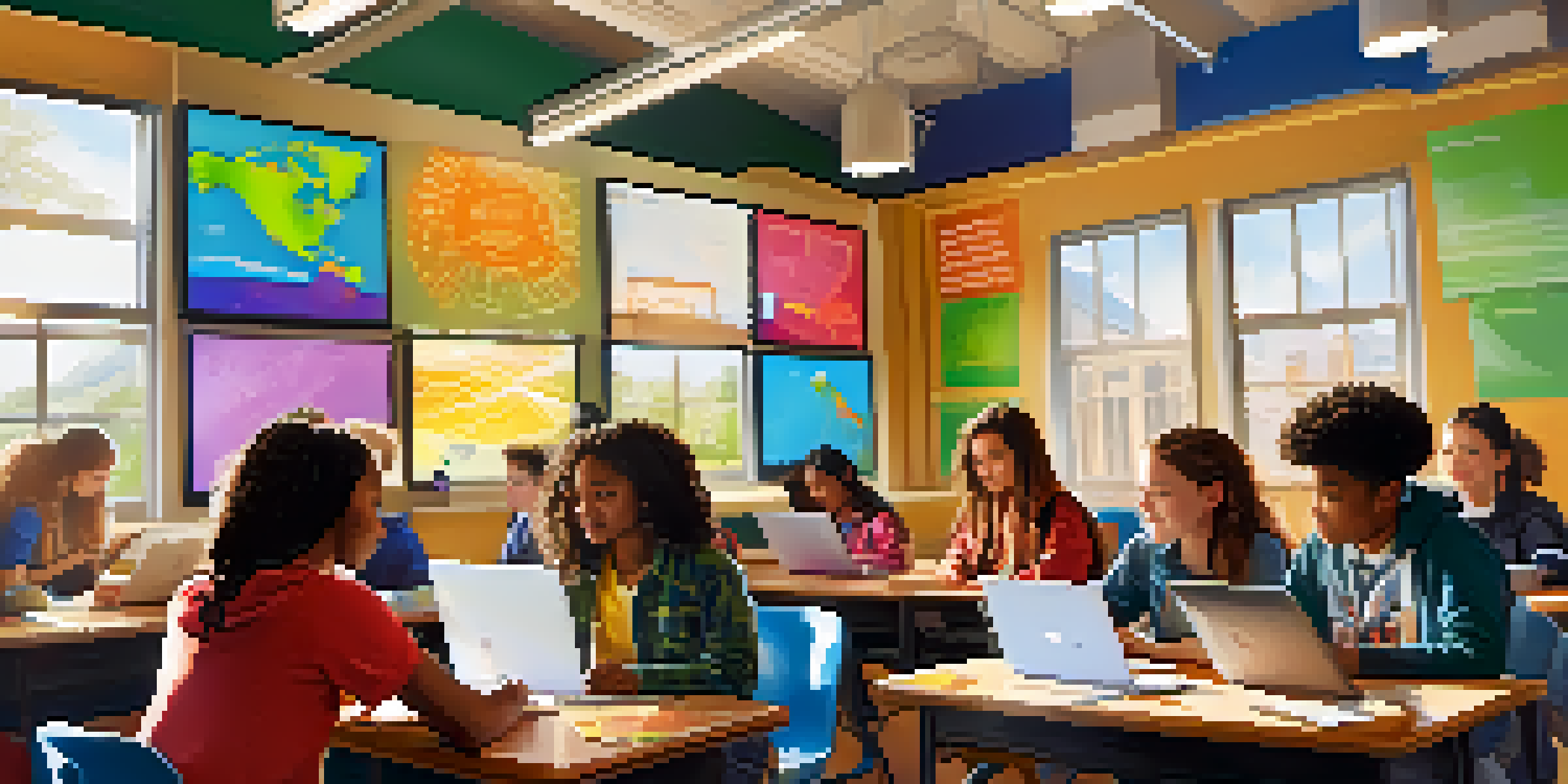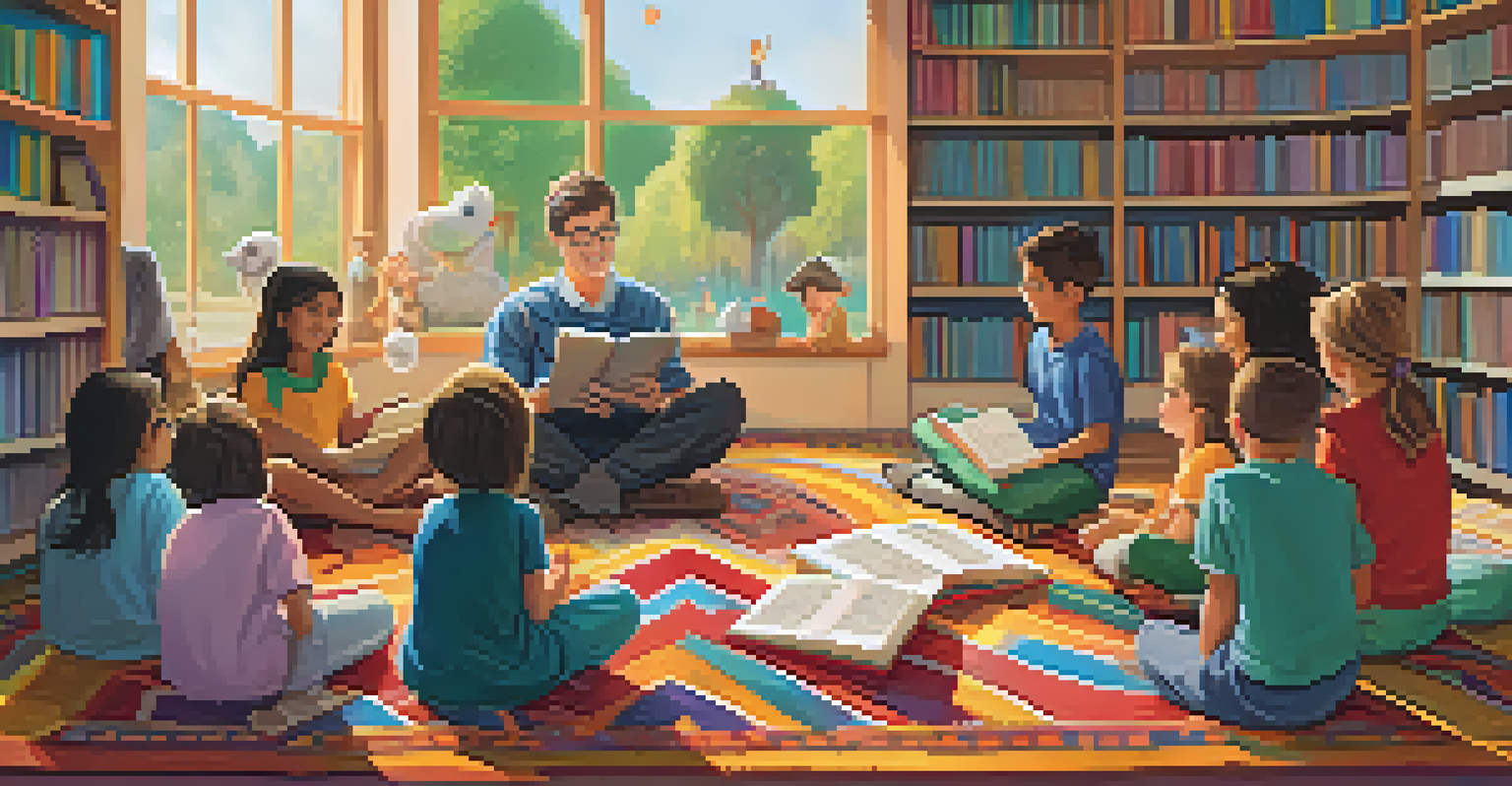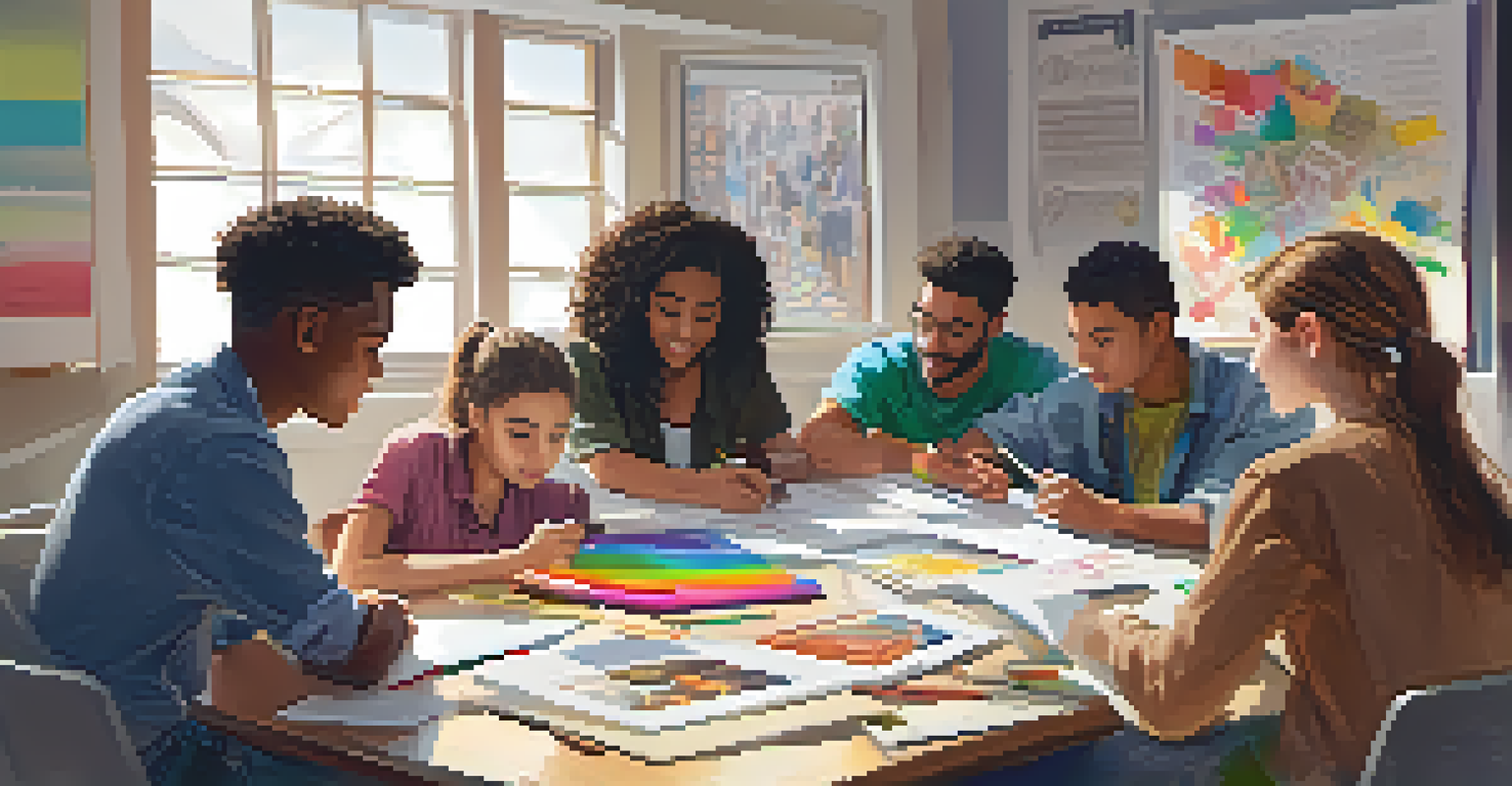Harnessing the Power of Storytelling in Blended Learning

Understanding Blended Learning and Its Challenges
Blended learning combines traditional face-to-face classroom methods with online digital media. This approach aims to provide a flexible learning experience but often faces challenges like student engagement and motivation. In a blended learning environment, learners might feel disconnected from their peers and instructors, leading to decreased participation.
Storytelling is the most powerful way to put ideas into the world today.
To overcome these hurdles, educators can leverage storytelling. Storytelling creates a sense of community and connection, making learning experiences more relatable and engaging. When students can see themselves in the narrative, it fosters a deeper emotional involvement that traditional methods might lack.
Moreover, storytelling can help clarify complex concepts. By framing information within a narrative, learners can better grasp ideas through examples and scenarios that resonate with their own lives, making the learning process more effective.
The Role of Storytelling in Enhancing Engagement
Engagement is key to successful learning, and storytelling is a powerful tool to capture attention. When educators share stories, they ignite curiosity and encourage learners to explore the subject matter more deeply. A captivating narrative can transform a mundane lesson into an adventure, piquing interest and motivating students to participate.

For instance, a history lesson about ancient civilizations can be brought to life through storytelling. Instead of merely listing facts, an instructor might share a story about a day in the life of a child from that era. This personal touch can make the lesson memorable and relatable, increasing student retention of the material.
Storytelling Boosts Engagement
Using storytelling in education captivates students, making lessons more relatable and memorable.
Furthermore, storytelling helps to create a safe learning environment. When students share their own stories or relate to those presented, it fosters trust and openness, encouraging them to express their thoughts and ideas without fear of judgment.
Creating Relatable Characters in Learning Narratives
One effective storytelling strategy in blended learning is the creation of relatable characters. Characters serve as a bridge that connects learners to the content, allowing them to see themselves in the narrative. When students identify with characters, they are likely to engage more actively with the material.
The greatest stories are never just about the person telling them; they're about the people who hear them.
These characters can be based on real-life scenarios or entirely fictional representations. For example, incorporating a character who faces challenges similar to those of the students can motivate them to overcome obstacles in their own learning journey. This connection makes the learning experience more personal and impactful.
Additionally, relatable characters can illustrate various perspectives, enriching discussions and encouraging critical thinking. By analyzing characters' decisions and challenges, students can explore different viewpoints and develop empathy, skills that are invaluable in collaborative learning environments.
Utilizing Multimedia Storytelling in Online Learning
In blended learning, incorporating multimedia elements into storytelling can elevate the learning experience. Visuals, audio, and interactive elements can enhance narratives, catering to diverse learning styles. For instance, a video presentation of a story can engage auditory and visual learners alike, making the material more accessible and enjoyable.
Moreover, multimedia storytelling can help break down complex information. Infographics, animations, and podcasts can simplify data while maintaining interest. When information is presented in various formats, it allows learners to engage with the content in ways that resonate with them personally.
Relatable Characters Enhance Learning
Creating characters that students can identify with fosters a deeper connection to the learning material.
Interactive storytelling tools also enable students to participate actively. Platforms that allow learners to create their own stories can spark creativity and ownership of the learning process, leading to deeper engagement and understanding.
Building Community Through Collaborative Storytelling
Collaborative storytelling is a powerful way to build community within blended learning environments. When students work together to create narratives, they not only share their ideas but also learn to appreciate different perspectives. This collaboration fosters a sense of belonging and encourages students to invest in each other's learning.
Group storytelling projects can take many forms, from writing a shared story to producing a video. These activities promote teamwork, communication skills, and problem-solving, all while reinforcing the subject matter. As students collaborate, they deepen their understanding and strengthen their connections with peers.
Additionally, collaborative storytelling can be a fun way to review material. Students can create stories that incorporate key concepts, turning revision into an engaging group activity rather than a solitary task.
Assessing Understanding Through Storytelling
Assessments in blended learning can be reimagined through storytelling. Instead of traditional tests, educators can ask students to demonstrate their understanding by crafting a narrative that encapsulates the concepts learned. This approach not only allows for creative expression but also provides insights into students' comprehension.
For example, a science class could ask students to create a story that explains a scientific process through the eyes of a character. This method encourages learners to internalize information and articulate their knowledge in a meaningful way.
Multimedia Storytelling Elevates Learning
Incorporating various multimedia elements into storytelling caters to diverse learning styles and enhances understanding.
Moreover, storytelling assessments can be more engaging for students. They often find it easier and more enjoyable to tell a story than to fill out a worksheet, leading to a more positive and productive assessment experience.
The Future of Storytelling in Blended Learning
As blended learning continues to evolve, storytelling will play an increasingly significant role. With the growing emphasis on personalized learning experiences, the ability to tailor narratives to individual students will enhance engagement and effectiveness. Educators can use storytelling to accommodate diverse learning styles and preferences, making education more inclusive.
Emerging technologies, such as virtual and augmented reality, will also transform how stories are told in blended learning. These innovations can create immersive experiences where learners can step into narratives, experiencing lessons in a unique and interactive way. This shift will likely lead to deeper emotional connections and understanding.

Ultimately, harnessing the power of storytelling in blended learning not only enriches the educational experience but also prepares students for a world where communication and creativity are paramount. By weaving stories into the fabric of learning, we can inspire future generations to think critically and empathetically.